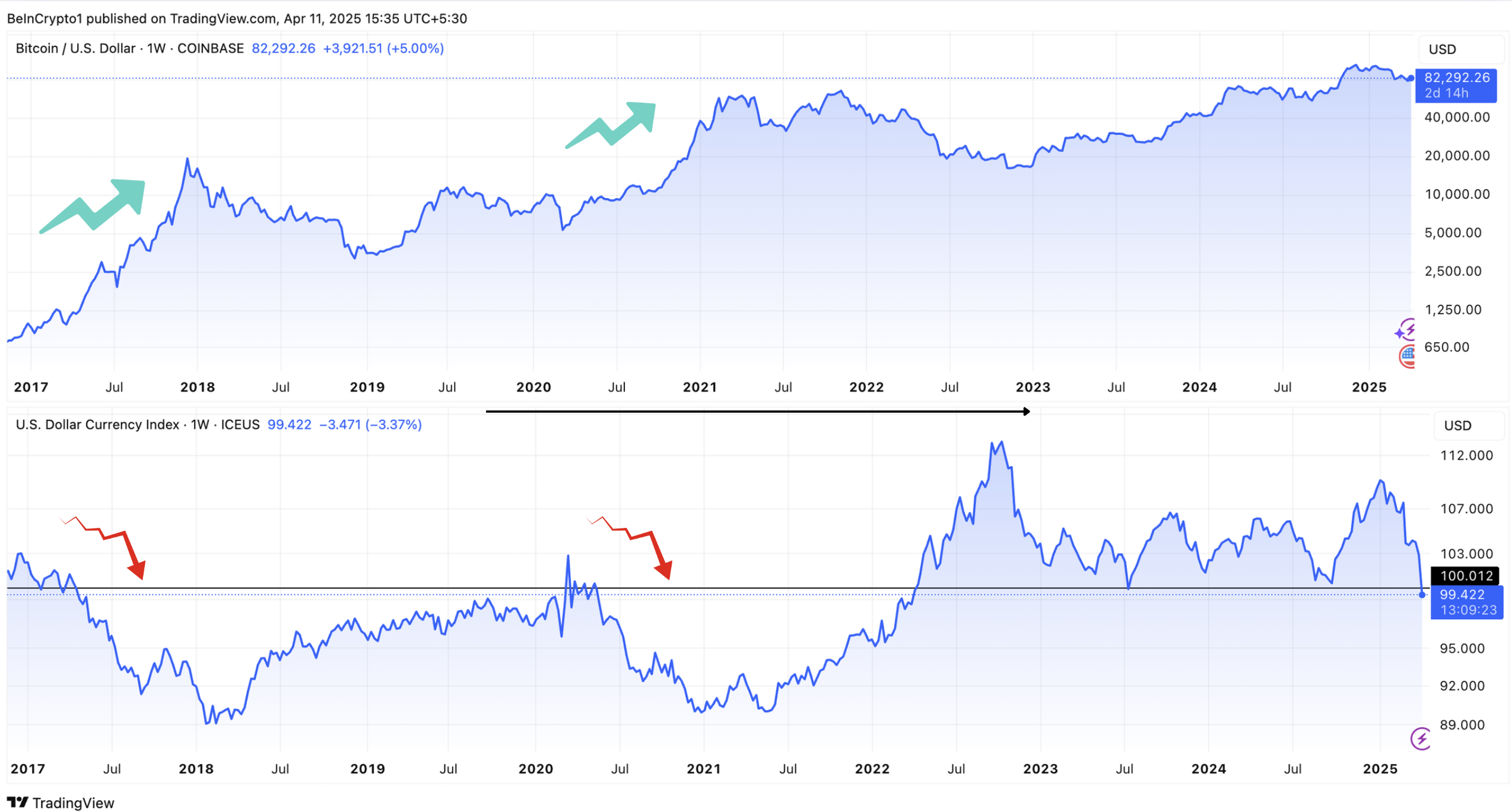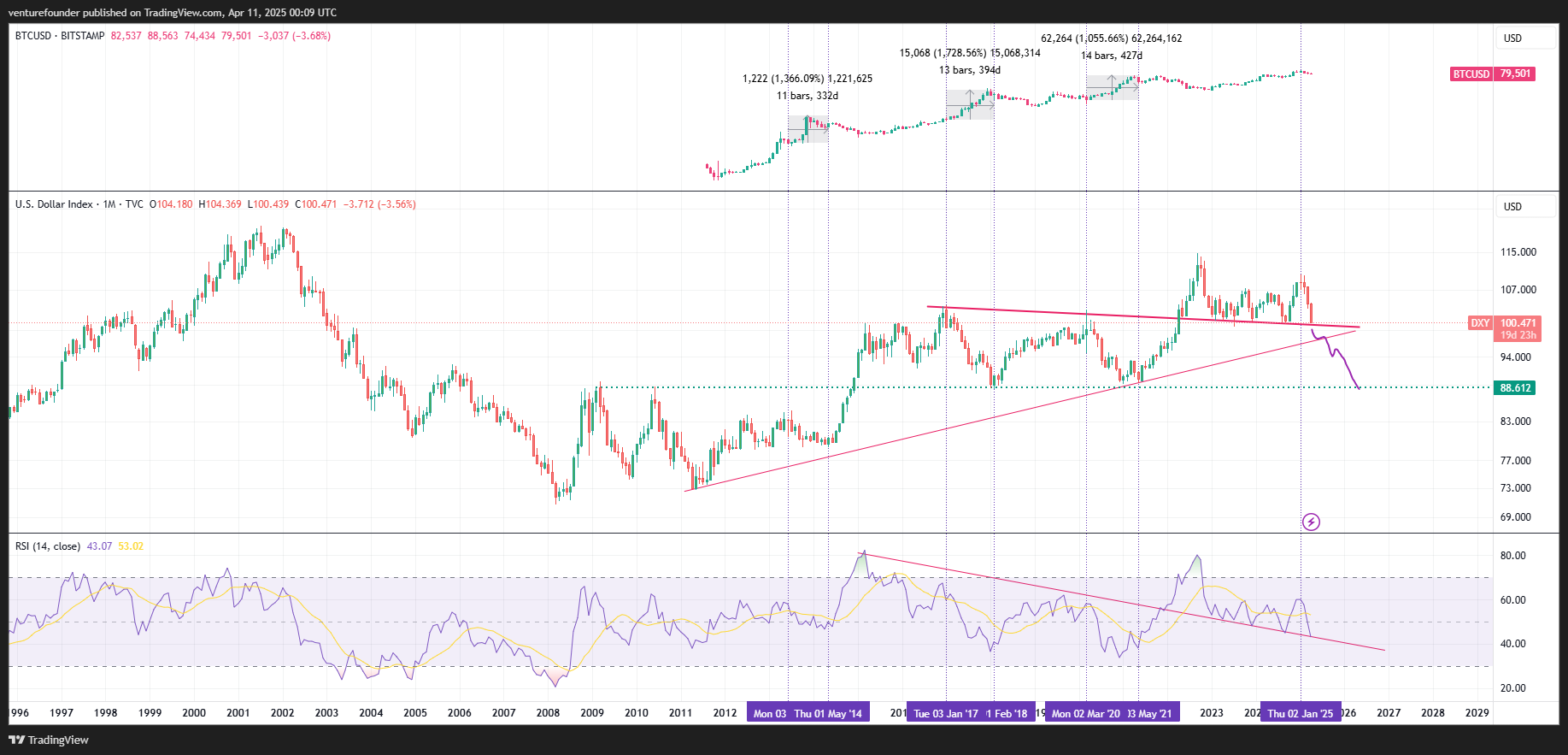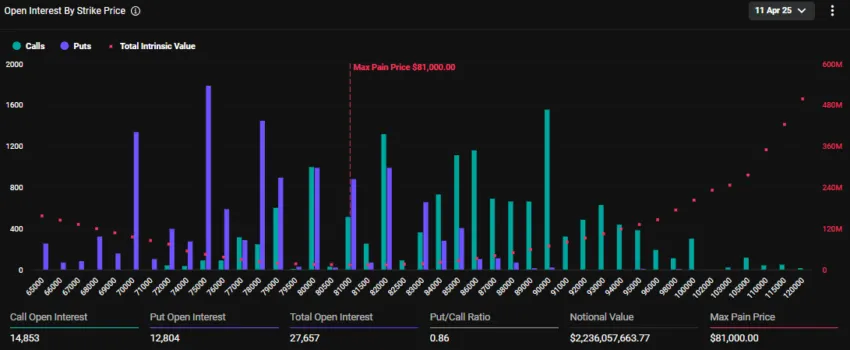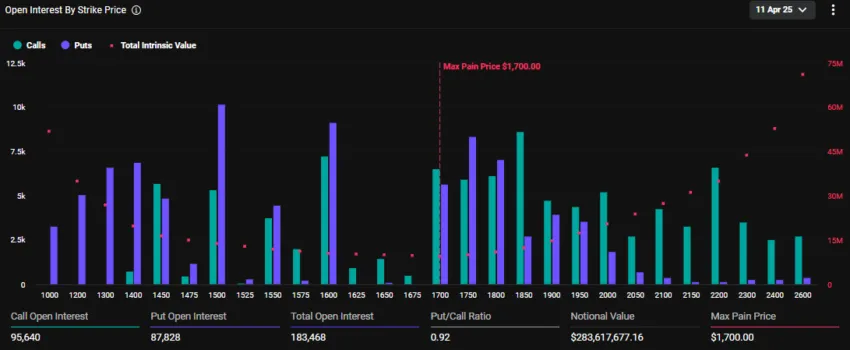Bitcoin
Here’s How Much Bitcoin Would Flood The Market If All Governments Decide To Sell

The German government undoubtedly left a sour taste on the crypto market following the sale of nearly 50,000 BTC, which it seized from the pirated movie website movie2k. This has led to further research into how much Bitcoin other governments hold, given the impact their sales could have on the market if they also decided to sell.
How Much Bitcoin Will Flood The Market If All Governments Sell
According to data from Bitcoin Treasuries, almost 517,414 BTC ($32.9 billion) will flood the market if all the nine governments currently holding the flagship crypto decide to offload all their BTC reserves. These governments include the United States, China, the United Kingdom, Ukraine, El Salvador, Bhutan, Venezuela, Finland, and Georgia.
The United States government currently holds the most BTC among these governments, with a reserve of 213,246 BTC. These bitcoins form part of the seizures from the dark web marketplace Silk Road. The US government is known to have already offloaded some of its Bitcoin holdings, with its last sale coming on April 2 when the government sold 1,754 BTC.
China is second on the list, with a BTC reserve of 190,000 BTC. Like the US, China’s Bitcoin holdings are believed to have come about through seizures from the Plus Token scam, a Ponzi scheme that promised investors high yields. The United Kingdom holds 61,000 BTC, which were seized from an ex-takeaway worker who was found guilty of money laundering.
Ukraine is next on the list, with a reserve of 46,351 BTC. El Salvador follows Ukraine, as the government holds 5,800 BTC. The El Salvador government has become famous for its pro-BTC stance. It has been actively accumulating BTC since the country adopted the flagship crypto as a legal tender in September 2021.
Bhutan, Venezuela, Finland, and Georgia are behind El Salvador with BTC holdings of 621, 240, 90, and 66 BTC, respectively.
Fund Managers Hold More BTC
As expected, asset managers like BlackRock hold more BTC, given how they have been accumulating the flagship crypto through their respective Bitcoin exchange-traded funds (ETFs). According to data from Bitcoin Treasuries, these fund managers hold a cumulative total of over 1 million BTC.
BlackRock is the largest BTC holder among these fund managers, with a reserve of 316,276 BTC for its IBIT Spot Bitcoin ETF. Grayscale is next on the list, with a reserve of 272,661 BTC for its GBTC Spot Bitcoin ETF. Fidelity, Ark Invest, and Bitwise complete the top 5 list with holdings of 176,995, 47,764, and 39,661 BTC, respectively.
At the time of writing, Bitcoin is trading at around $63,800, up over 1% in the last 24 hours, according to data from CoinMarketCap.
Featured image created with Dall.E, chart from Tradingview.com
Bitcoin
Bitcoin’s Impact Alarming, Says NY Atty. General—Congress Needs To Act

New York Attorney General Letitia James issued a warning to US congressional leaders regarding regulation of cryptocurrency, particularly how Bitcoin and other virtual currencies could erode the US dollar’s position around the world. She urged stronger federal regulations to protect investors from fraud and criminal use in the cryptocurrency market.
NY’s Top Lawyer Demands Stricter Crypto Restrictions
James emphasized the importance of a federal regulatory system for digital currencies in her Congressional letter. She identified that lacking regulation, these type of currencies expose users to fraud and monetary volatility.
Bitcoin currently presents an actual threat to the dominance of the dollar, particularly since more businesses and individuals opt for digital currencies when sending money overseas, James indicated.
Her concerns echo those of BlackRock CEO Larry Fink, who suggested that Bitcoin could serve as a hedge against the dollar amid US fiscal challenges and rising inflation.
“Millions of New Yorkers actively buy, sell or hold cryptocurrency and other digital assets, and they deserve further protection,” James wrote in her message.
NEW: This morning @NewYorkStateAG Letitia James sent a letter to congressional leaders @LeaderJohnThune, @SenSchumer, @SpeakerJohnson and @RepJeffries urging them to pass a federal regulatory framework for digital assets to mitigate fraud, criminal activity, and financial… pic.twitter.com/yJjDgBqdBt
— Eleanor Terrett (@EleanorTerrett) April 10, 2025
Stablecoin Safeguards And Investor Protection Measures
The Attorney General placed particular emphasis on stablecoins, which are cryptocurrencies pegged to stable assets such as the US dollar. She called on lawmakers to establish regulations mandating that stablecoin issuers have a US presence and support their tokens with US dollars or treasuries.
James described how stablecoins facilitate the exchange of value among various cryptocurrencies but, in the absence of regulation, can be manipulated and create fraud.
She also demanded greater protections from crypto scams that have resulted in tremendous financial losses. “Thousands of New Yorkers and investors nationwide have lost millions of dollars to cryptocurrency scams and fraud that can be avoided with more robust federal regulations,” James said.

Keep Crypto Out Of Retirement Funds
James actually cautioned against having digital assets in retirement accounts like IRAs. She contended that cryptocurrencies are too volatile and risky for retirement savings plans, citing the extreme price fluctuations of Bitcoin as proof of instability capable of injuring the financial well-being of individuals, especially retirees relying on savings. This is because financial institutions like Fidelity began offering crypto IRA options to clients.
In addition to investor protection, James also contended that thorough crypto regulations would enhance national security. She explained that cryptocurrency purchases are usually anonymous and used for criminal activities, thus necessitating the government to implement stringent rules mandating crypto firms to register with regulators and adhere to anti-money laundering protocols.
Featured image from Dado Ruvic/REUTERS, chart from TradingView
Bitcoin
Is Bitcoin Ready for Another Surge?

The US Dollar Index (DXY), which measures the dollar’s value against a basket of foreign currencies, has dropped to a three-year low. The decline contrasts with gold’s performance, which hit an all-time high of $3,220 amid rising trade war tensions.
Yet, DXY’s dip has sparked optimism among cryptocurrency investors. Many see the weakening dollar as a bullish signal for Bitcoin (BTC), which has recently shown signs of modest recovery.
Will Bitcoin Rally Following the DXY Index’s Fall?
Data shows that the DXY index dropped by 1.5% in the last 24 hours. As of press time, it stood at 99.4, marking its lowest level since April 2022. The decline is part of a broader trend in 2025, with the DXY down 8.3% since January.
“The US dollar index dropped to its lowest level in nearly three years amid capital outflows from American assets. Escalating trade tensions and growing concerns over broader economic fallout, particularly for the US, have weighed heavily on market sentiment,” CryptoQuant’s Alex Adler told BeInCrypto.
Notably, the index’s fall below 100 marks a critical threshold. Historical data highlights a strong correlation between a declining DXY and substantial Bitcoin price surges.

The last two times the DXY fell below the 100 mark—in April 2017 and May 2020—Bitcoin experienced significant, months-long rallies. These substantial increases have led to speculation that history could repeat itself. If it does, Bitcoin could potentially be poised for another major surge.
Interestingly, Bitcoin has already shown signs of recovery after the 90-day tariff pause. The largest cryptocurrency reclaimed the $80,000 level, signaling renewed investor confidence. According to BeInCrypto data, Bitcoin appreciated by 0.8% over the past 24 hours. This reflected minor but positive gains that suggest momentum could be building.
In fact, the market watchers on X (formerly Twitter) share a similar outlook.
“Weak dollar is going to be a surprising tailwind for emerging markets this year that wasn’t on anyone’s bingo card,” a user wrote.
Meanwhile, an analyst observed that the US dollar’s decline has occurred despite the Federal Reserve’s failure to reduce interest rates or implement quantitative easing (QE).
“Traditionally, DXY going down is very bullish for BTC,” he said.
The analyst also highlighted a notable bearish divergence on the charts. Thus, he predicted that the dollar could potentially drop to 90, signaling a further decline in its value.

Similarly, another analyst described DXY’s decline as “one of the best anticipated macro moves ahead.”
“Each time this has happened in the past, it resulted in a massive bull market for Bitcoin, Crypto, and stocks,” Jackis remarked.
He also acknowledged that the markets have been slow to react, attributing this delay to a lag of more than three months. Additionally, he noted that the ongoing bond situation between China and the US, driven by escalating trade tensions, is contributing to this slow reaction.
Yet, he believes this situation will either be resolved through a deal between the two countries or the Federal Reserve will intervene by buying long-term bonds to stabilize the market. Now, the coming weeks will be crucial to determine whether Bitcoin will actually enter another bull run or falter under geopolitical tensions and broader market shifts.
Disclaimer
In adherence to the Trust Project guidelines, BeInCrypto is committed to unbiased, transparent reporting. This news article aims to provide accurate, timely information. However, readers are advised to verify facts independently and consult with a professional before making any decisions based on this content. Please note that our Terms and Conditions, Privacy Policy, and Disclaimers have been updated.
Bitcoin
Over $2.5 Billion in Bitcoin and Ethereum Options Expire Today

Crypto markets will witness over $2.5 billion worth of Bitcoin (BTC) and Ethereum (ETH) options expire today.
Traders are particularly attentive to this event because it has the potential to influence short-term trends through the volume of contracts due for expiry and their notional value. Examining the put-to-call ratios and maximum pain points can provide insights into traders’ expectations and possible market directions.
Bitcoin and Ethereum Options Expiring Today
The notional value of today’s expiring BTC options is $2.23 billion. According to Deribit’s data, these 27,657 expiring Bitcoin options have a put-to-call ratio of 0.86. This ratio suggests a prevalence of purchase options (calls) over sales options (puts).
The data also reveals that the maximum pain point for these expiring options is $81,000. In crypto options trading, the maximum pain point is the price at which most contracts expire worthless. Here, the asset will cause the greatest number of holders’ financial losses.

In addition to Bitcoin options, 183,468 Ethereum contracts are set to expire today. These expiring options have a notional value of $283.6 million and a put-to-call ratio of 0.92. The maximum pain point is $1,700.

The current market prices for Bitcoin and Ethereum are below their respective maximum pain points. BTC is trading at $80,622, while ETH sits at $1,543.
“With recent market volatility and ongoing tariff developments, how do you think these expiries will impact price action?” Deribit posed.
Deribit is a crypto options and futures exchange. Indeed, crypto markets are reeling from massive volatility induced by the trade war chaos following President Trump’s tariffs. Meanwhile, Cardano founder Charles Hoskinson says future tariffs will be ineffective on crypto.
He thinks that tariffs are already priced and that future announcements will be a ‘dud’ for the crypto market.
Traders Brace for Extended Weakness as Call Premium Fades Until September
Elsewhere, analysts at Deribit note a shift in crypto options, with short-term dips still bringing put demand. Meanwhile, the call premium is further out of the curve and fades.
“You now have to look all the way to September before calls retake the skew. Traders might be bracing for extended weakness,” Deribit noted.
This suggests traders might be bracing for extended weakness in the crypto market. A fading call premium, where the implied volatility (IV) of calls drops relative to puts, suggests that traders are less optimistic about price increases in the near to medium term.
A negative or reverse volatility skew, where OTM puts ((out-of-the-money puts) have higher IV than OTM calls ((out-of-the-money calls), is common in equity markets when investors fear price drops.
This pattern appears to play out in the crypto options market, reflecting heightened concerns about downside risks. Analysts at Greeks.live note that BTC’s IV has declined significantly and is now largely holding nearly 50% across all maturities.
On the other hand, ETH’s IV has maintained a higher level, with short to medium-term volatility holding near 80%. Selling ETH options in the short term would be a good trade for traders.
Global economic uncertainty, including the US-China tariff war, has dampened risk appetite. Crypto’s inherent volatility could also be fueling this cautious outlook.
“Sentiment was more panicky this week, with Trump’s frequent switching of tariff policies making the market extremely risk averse,” analysts at Greeks.live wrote.
The Greeks.live analysts agree with Deribit’s expectations of extended weakness. However, unlike Hoskinson, they expect continued uncertainty and volatility in the market for a long time.
For traders, this suggests a need for hedging strategies, like buying puts or diversifying into stablecoins.
“Cryptocurrencies are currently suffering from a lack of new incoming money, a lack of new narratives, and a more subdued investor sentiment. In this worse market of bulls to bears, the probability of a black swan will be significantly higher, and buying some deep vanilla puts would be a good choice,” Greeks.live analysts concluded.
Disclaimer
In adherence to the Trust Project guidelines, BeInCrypto is committed to unbiased, transparent reporting. This news article aims to provide accurate, timely information. However, readers are advised to verify facts independently and consult with a professional before making any decisions based on this content. Please note that our Terms and Conditions, Privacy Policy, and Disclaimers have been updated.
-

 Market24 hours ago
Market24 hours ago3 Altcoins to Watch for Binance Listing This April
-

 Market22 hours ago
Market22 hours agoLawmakers Propose the PROOF Act to Avoid Another FTX Incident
-

 Market20 hours ago
Market20 hours agoThis is Why The Federal Reserve Might Not Cutting Interest Rates
-

 Altcoin7 hours ago
Altcoin7 hours agoBinance Issues Important Update On 10 Crypto, Here’s All
-

 Market19 hours ago
Market19 hours agoXRP Price Flashes Symmetrical Triangle From 2017, A Repeat Could Send It as Flying To $30
-

 Market18 hours ago
Market18 hours agoCrypto Whales Are Buying These Altcoins Post Tariffs Pause
-

 Market17 hours ago
Market17 hours agoBinance and the SEC File for Pause in Lawsuit
-

 Market14 hours ago
Market14 hours agoYouHodler CEO Talks DeFi, Crypto Lending, and Web3 Innovations





















